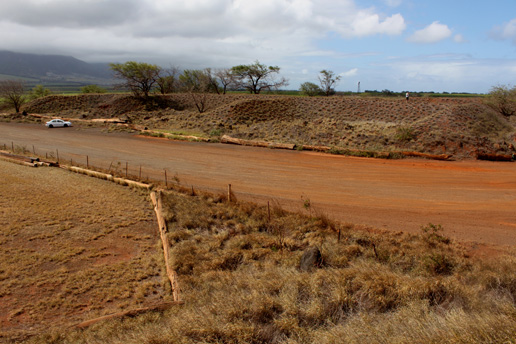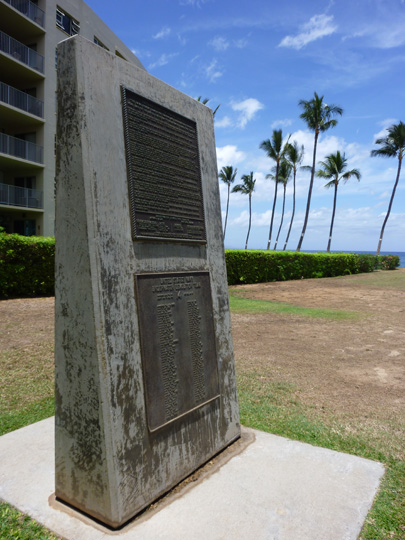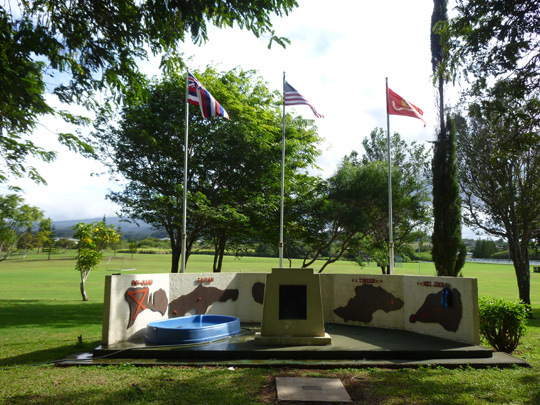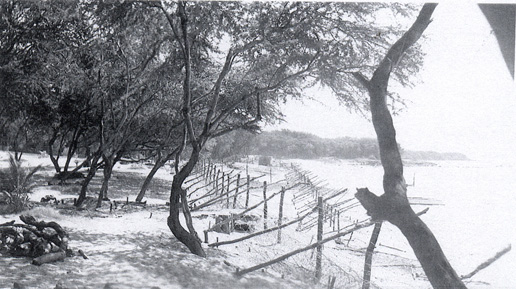Memories of the Home Front
A Different Hawai`i

Many visitors to Hawai`i make an effort to experience the significant heritage sites at Pearl Harbor. Those who become more familiar with the islands soon realize that we are surrounded by many sites and locations which evoke memories of the past. The shipwrecks and submerged aircraft enjoyed by recreational divers throughout the state comprise a maritime cultural landscape specific to Hawai`i during World War II. These, in turn, are directly associated with historic locations and monuments on the shore.
The submerged aircraft near Maui recall the Naval Air Stations at Kahului and Pu`unēnē. Following the war, NAS Kahului reverted to civilian use, and is known today as Kahului Airport. NAS Pu`unēnē eventually closed in the 1950s; today the location hosts Maui's raceway park and open runway for model plane enthusiasts. The bunkers and revetments still define areas of the historic air station, visible across the cane fields of the island's broad interior, between the sugar mill and the Kī hei coastline along the Mokulele Highway.

The submerged remnants of the tracked amphibious vehicles recall the intense activity along the beaches of Maui's south coast, and the historic location of the Maui Amphibious Training Center at Kama`ole Park. Today a monument to the Underwater Demolition Teams (UDT) marks the historic nature of the location.
Camp Maui, near the town of Ha`ikū on the slopes of Haleakalā, is today a beautiful memorial park. The plaques and monument commemorating the 4th Marine Division lie close by prominent "Giggle Hill," where many marines spent treasured moments with girlfriends.
These sites recall a very different Hawai`i. But memories of the war years in the islands run deeper than just a few isolated locations. For civilians on the home front, barbed wire lined the beaches, gas masks were required safety equipment, and black-out conditions darkened the streets. The war was not fought in a vacuum, but involved everyone, civilian and military alike. Three days after the attack on Pearl Harbor, martial law was declared; liberties once taken for granted were curtailed as civil courts closed and the writ of habeas corpus, protection against illegal detention, was suspended.

Unauthorized publication of any type of news media or information was prohibited. All photographers were required to be registered, and film had to be submitted to military censors within 48 hours of being developed (very few images of training exercises exist). Nonetheless, the residents of Hawai`i united and pulled together during the war effort.
History gains its significance by what we decide to remember, by how we chose to interpret and commemorate the past. It is relatively easy to see the submerged aircraft and amphibious vehicles as individual wrecks, simply the technological reminders of a period that forever changed Hawai`i and the United States. They are actually part of a broader cultural landscape, locations and memories providing a window on a very different period in Hawai`i.

It is equally as important, then, to understand not only the wreck sites, but the stories of sacrifices made during both training and combat operations, and remember the challenges faced on the home front. NOAA's Maritime Heritage Program seeks to discover these iconic landscapes and share the values of special marine areas with the public.

